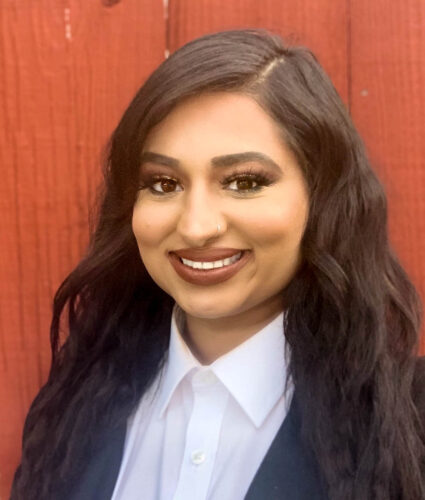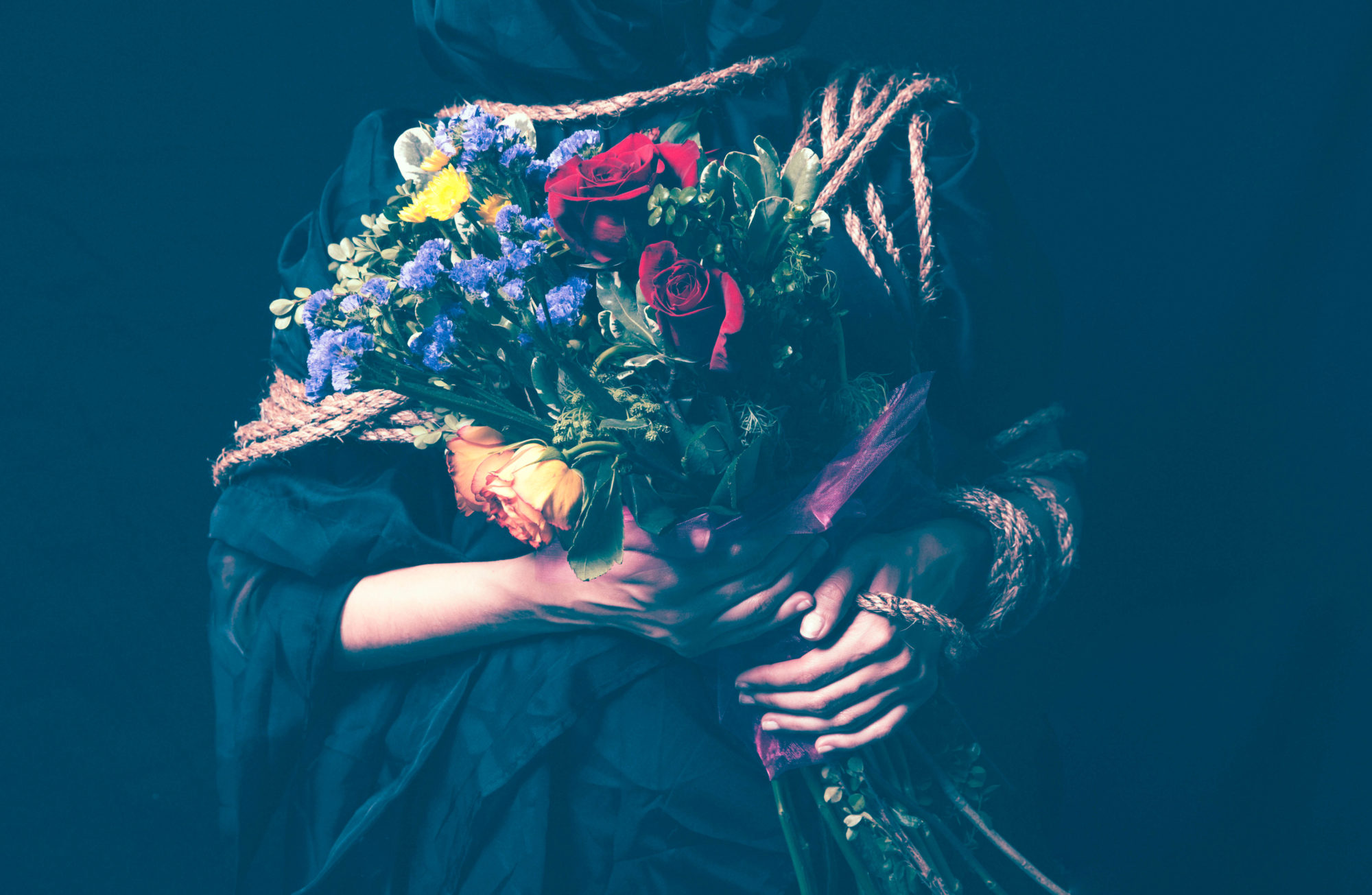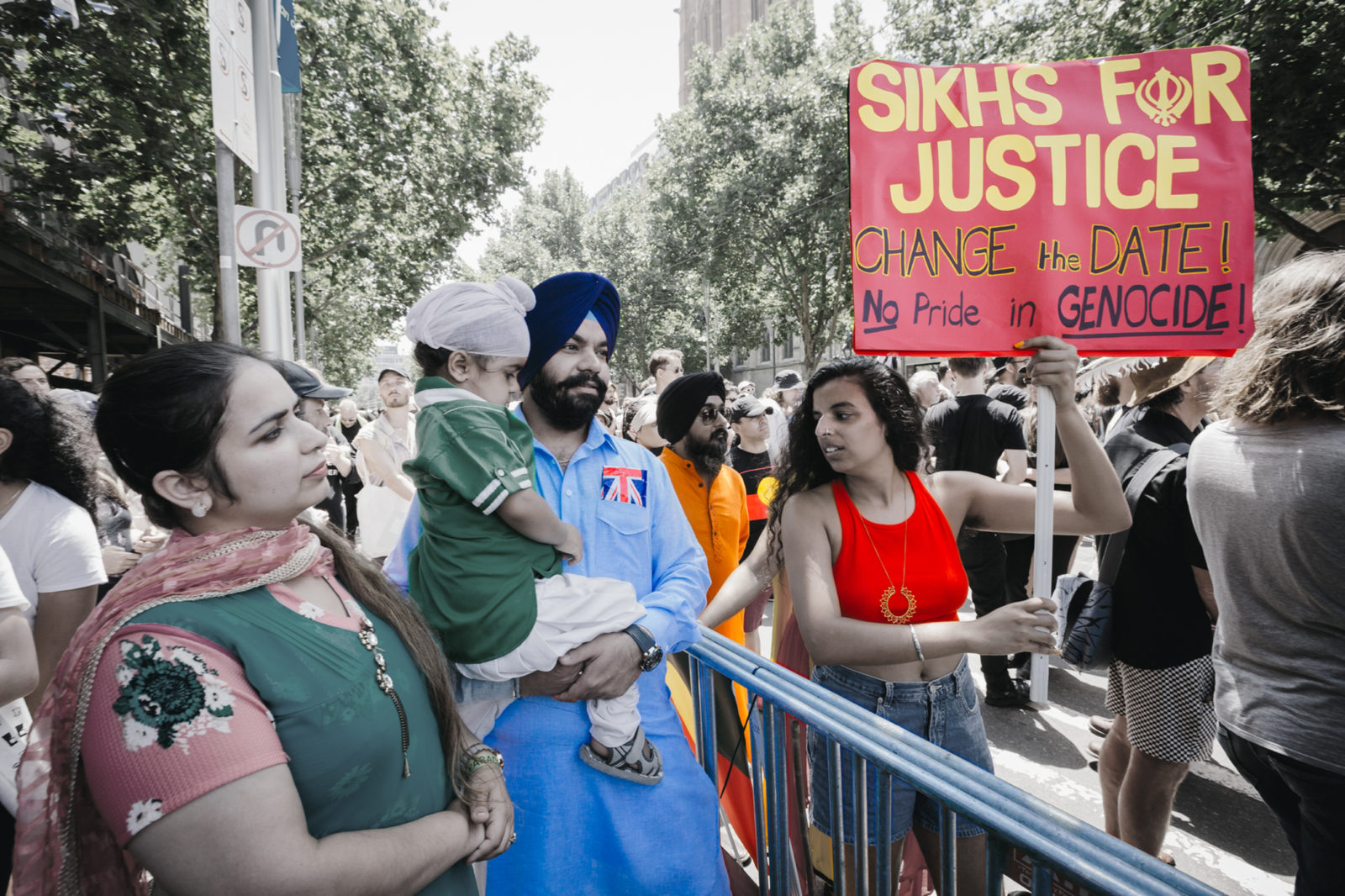by manmit and Manu
Content notes: Includes examples of transphobia, homophobia, queerphobia, and casteism.
Trigger warning: Rape and violence.
This is Part 3 of a 3 part article. Be sure to read part 1 and part 2 first.
In this series, we ask a few questions.
Is the Sikh panth working to create Sikh spaces (whether that be in our homes, organizations, institutions, initiatives, movements, communities, gurdwaras, or an imagined Khalistan) that are based on the vision set forth by the Gurus? Are we creating Sikh spaces which are truly equal and facilitate the spiritual growth of every person? Ultimately, are we developing Sikh spaces where Dalits, queer, and trans folks can find liberation and equality?
Or, are we continuing the legacy of casteism, queerphobia, and transphobia in our spaces that continues to plague society at-large?
We are going to explore this very complex and heavy topic in three parts:
- Part 1: The Problem. In Part 1 we will discuss discrimination, caste oppression, how the Sikh Gurus worked against casteism, and how casteism manifests today.
- Part 2: Who is a “Sikh”? Here, we will discuss how people use caste and cisheteronormativity to gate-keep Sikhi.
- Part 3: Moving Forward. Below we will discuss how we can move towards a gurmat-oriented society and practical ways to become more welcoming and loving as individuals and as a panth.
PART 3: MOVING FORWARD
Towards Collective Liberations/Action items
So, with all of this in mind, how do we move forward? We want to note that we are not denying the fact that cisheterosexual jat Sikh men are experiencing genocide at the hands of the brahminical government of India. Nor are we writing to denounce any Sikh or Khalistani movements. Rather, we wish to ask the question, “How do we work to create a Sikh society that is inclusive of everyone and free of ‘isms’ and phobias, like casteism, sexism, transphobia, queerphobia?”
Here are a few ideas:
1) Asses Our Own Complicity
We are urging us all to understand that in order to truly create a liberatory community beyond genocides, we must also assess our own complicities in the oppression of the most marginalized peoples in our community. Those of priviledged castes need to understand how caste privilege is derived from the ongoing genocide of Dalit and Bahujan folks. (See: Amnesty International’s article on sexual violence and caste; Feminism In India’s article on violence against Dalits; Postcolonial Studies: An Anthology edited by Pramod K. Nayar). There needs to be an understanding, for example, of the ways caste has been one of the leading factors that has allowed for the immigration of most Punjabi Sikhs in America. There needs to be constant refusal of the caste-based slurs that are so normalized now, such as choohra and chamar, that are Dalit castes but have become deragotry slurs used by oppressor caste peoples. Oppressor caste folk need to be critical of jatt pride and demand accountability from, for example, the Punjabi media industry that has normalized jatt pride through its films and music.
Furthermore, cisheterosexual folks need to understand how their cisheteronormativity is derived from violence on queer and trans bodies. I (manmit) have grown up with various members of the Sikh community verbally abusing me and weaponizing “khusra” as a slur against me. The policing of queer and trans bodies continues that prabhdeep singh kehal has written beautifully about in another article.
2) Disavow Our Privilege
Taking the Guru Sahib’s hukam, we need to disavow our privileges and power hierarchies that do exist, along the lines of caste, gender, and sexuality, and commit ourselves to the liberation of the most marginalized.
As revealed to Guru Nanak Sahib Ji (Siree Raag, Ang 15):
ਨੀਚਾ ਅੰਦਰਿ ਨੀਚ ਜਾਤਿ ਨੀਚੀ ਹੂ ਅਤਿ ਨੀਚੁ ॥
Nanak seeks the company of the lowest of the low caste, the very lowest of the low.
ਨਾਨਕੁ ਤਿਨ ਕੈ ਸੰਗਿ ਸਾਥਿ ਵਡਿਆ ਸਿਉ ਕਿਆ ਰੀਸ ॥
Why should they try to compete with the great?
ਜਿਥੈ ਨੀਚ ਸਮਾਲੀਅਨਿ ਤਿਥੈ ਨਦਰਿ ਤੇਰੀ ਬਖਸੀਸ ॥੪॥੩॥
In that place where the lowly are cared for-there, the Blessings of Your Glance of Grace rain down.
Guru Nanak Sahib Ji themselves was an oppressor caste khatri, but continuously disavowed their caste privilege and associated themselves with the most oppressed and marginalized. This disavowal is extremely important because the privilege of one comes through the subjugation of another. And taking pride in another’s subjugation is against the Guru Sahib’s teachings. Guru Sahib associated themselves with the most marginalized and admonished and this is in direct opposition to our current state: where on the grounds of caste, we create and restrict our communities, create separated gurdwaras for Dalit Sikhs, hurl queerphobic and transphobic slurs to deny the existence of queer and trans folk, and create and consume media that reinforces jatt pride.
Through urging us to disavow our privileges, Guru Sahib is asking us to be critical of who we are in community with (and who we are NOT in community with). Not only do our villages in Punjab remain divided and segregated on the grounds of caste, even within the United States, we continue to practice endogamy and protect our caste privileges. We continue to reinforce the normalization of cisheterosexuality. Here, I am thinking about the Rehat Maryada (written by oppressor caste cisheterosexual men) that continues to erase queerness and transness, Akal Takth’s ongoing condemnation of queerness, and the recent Sikh gay wedding in Sacramento that initiated an overwhelmingly large response from the Sikh community and mobilized a lot of queerphobic comments.
To disavow our privileges would be to actively disinvest from jatt cisheteronormativity, investments of which have become the basis for so much of our joy and community formation. It is through jatt cisheteronormativity that many have found their music, dances, films, cultural functions, marriage celebrations, etc. There is a need to disinvest and reject such joy that is possible through excluding Dalit, queer, and trans folk. And through such disinvestment, there is an opportunity to, as Dalit feminist and Executive Director of Equality Labs Thenmozhi Soundararajan says, “repopulate our cultural landscape.”
Through actively disinvesting from brahmanism, Guru Sahib created our beautiful Sikhi. From disinvesting from jatt cisheteronormativity, we have an opportunity again to return to our Guru Sahib’s disinvestments and find the Guru’s grace within the centering of the oppressed.
3) Talk About It
Bringing up and discussing caste is not the problem; we need to discuss systems of oppression in order to dismantle them. The problem is using caste to dehumanize and demonize people. Yet, interestingly, on Twitter, we are seen as the “trouble makers” for bringing up caste oppression. I (manu) am told that if I stop mentioning caste, casteism would be annihilated.
So, we need to have discussions about caste, gender, and sexuality, that center the needs of caste oppressed and queer and trans folk. Some possible discussion questions could be:
- How has caste and casteism allowed us to be where we are at?
- What are our preconceptions about gender and sexuality?
- What are some slurs that we use in our house and are they related to caste?
- What kind of media do we consume and how does jatt cisheteronormativity manifest?
4) Actively Practice Equality
Guru Sahib made it clear that we need to be practicing equality is an active endeavor, not a passive one. For example, it is true that Sikhi annihilated caste but this annihilation was not a passive proclamation but an active disavowal of the caste system through instituting various measures like pangat, langar, and sangat. It is an active commitment to equality that Guru Sahib preached and instituted, and silence is the very antithesis of that active commitment the Guru Sahib taught us about. In this piece, we are again reminding the Sikh community that equality and liberation does not rest in mere statements or the lack thereof, but instead in an active commitment to dismantling casteist cisheteronormativity.
Because this work is not linear and so complex, we can’t prescribe you a set of actions. Instead, we urge you to educate yourself. Equality Labs, an international organization led by Dalit feminists, queer, and trans folk dedicated to caste annihilation, has compiled a list of resources to learn more about caste. Raj Kumar Hans has also published a piece specific to understanding Dalit Sikh History. We urge you to educate yourself and demand accountability from yourself and those around you and leave you to answer the following question for yourself: “what are YOU doing to dismantle casteist cisheteronormativity?”
No One is Exempt
To highlight the need for us all to be critical of how we are complicit in genocide, oppressor caste queer and trans folks like me (manmit) are not exempt from accountability for our casteism. Even within queer and trans spaces, casteist hierarchies continue to be reinforced. For example, in extending support for the Kissan Morcha, many queer and trans folks were also taking pride in their jatt identities. But what does it mean to take pride in an identity that derives its privilege and domination through the genocide of Dalit folks? Instead, there is a need to center Dalit and queer and trans liberation within our spaces and movements, including Kissan Morcha. It is within the disavowal of privileges and a commitment to the liberation of queer and trans Dalit folks through which we will gain Waheguru’s grace.
This piece is calling on us all to assess who is being centered within our current liberation movements in order to truly align ourselves with the Guru Sahib’s teachings. It is only through following the Guru Sahib that we can move towards liberation. It is only through challenging brahminal jatt cisheteropatriarchy that we can move towards our liberation. Unless we center and prioritize the liberation of queer and trans Dalit folks, Sikh spaces, initatives, and endeavors will fail to truly Gurmat inspired and instead recreate the brahminical jatt cisheteropatriarchal order that we all have sought to escape.
Bul Chuk Maf
Please forgive us for any mistakes. Any analysis and reflections that you find informative are because of the work of Black peoples, Indigenous peoples, Dalit and caste oppressed peoples, other queer and trans folks, femmes, and many others within these intersections and beyond. All the shortcomings and mistakes are fully ours. May our Waheguru give us better understanding moving forward and always keep me learning. And may our Waheguru have kirpa on the caste oppressed and queer and trans farmers fighting within the Kisaan Morcha right now. May our Waheguru have kirpa on us all.
About the Authors
manmit singh chahal
manmit (they/them) is a student studying Comparative Ethnic Studies major with minors in Women’s and Gender Studies and Queer Studies. Currently working on graduating, they are applying for Ph.D. programs in Ethnic Studies, American Studies, Women and Gender Studies, and Feminist Studies.
manu kaur

Manu (they/them) works in neuroscience research and is a community organizer, educator, and advocate. They are a queer non-binary Dalit feminist committed to caste annihilation, queer liberation, and mental health activism. Their work is centered around advocating for caste oppressed communities, defending queer and trans lives, and dismantling the anti-Blackness that exists within the diasporic South Asian community. Manu dreams of a world that amplifies, uplifts, and protects Black, Dalit, queer, and trans lives.





No Comments